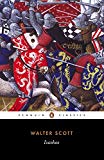
Ivanhoe, which takes place in the twelfth-century, is a historical novel that follows the story of protagonist Wilfred of Ivanhoe, a Saxon of British descent, who has been disinherited by his father for supporting the Norman King Richard, of French descent. Though the novel does explore important themes like the conflict between heroic ideals and modern society, Ivanhoe is primarily an adventure story, as readers follow the main character through jousts, tournaments, and saving damsels in distress.
Scott treats themes similar to those of some of his earlier novels, like Rob Roy and The Heart of Midlothian , examining the conflict between heroic ideals and modern society. In the latter novels, industrial society becomes the centre of this conflict as the backward Scottish nationalists and the "advanced" English have to arise from chaos to create unity. Similarly, the Normans in Ivanhoe , who represent a more sophisticated culture, and the Saxons, who are poor, disenfranchised, and resentful of Norman rule, band together and begin to mould themselves into one people. The conflict between the Saxons and Normans focuses on the losses both groups must experience before they can be reconciled and thus forge a united England. The particular loss is in the extremes of their own cultural values, which must be disavowed in order for the society to function. For the Saxons, this value is the final admission of the hopelessness of the Saxon cause. The Normans must learn to overcome the materialism and violence in their own codes of chivalry. Ivanhoe and Richard represent the hope of reconciliation for a unified future.
Already have an account? Log In Now